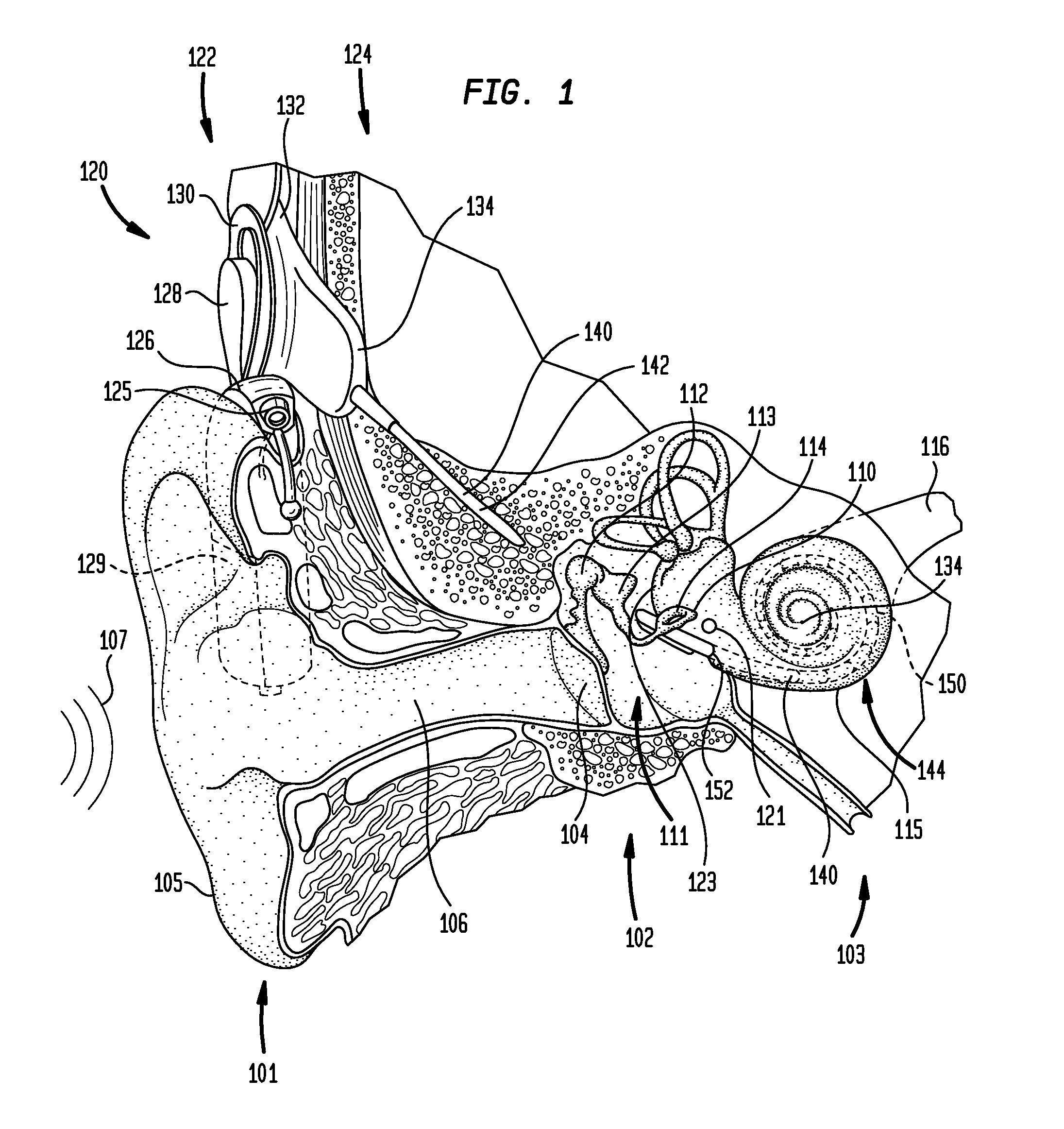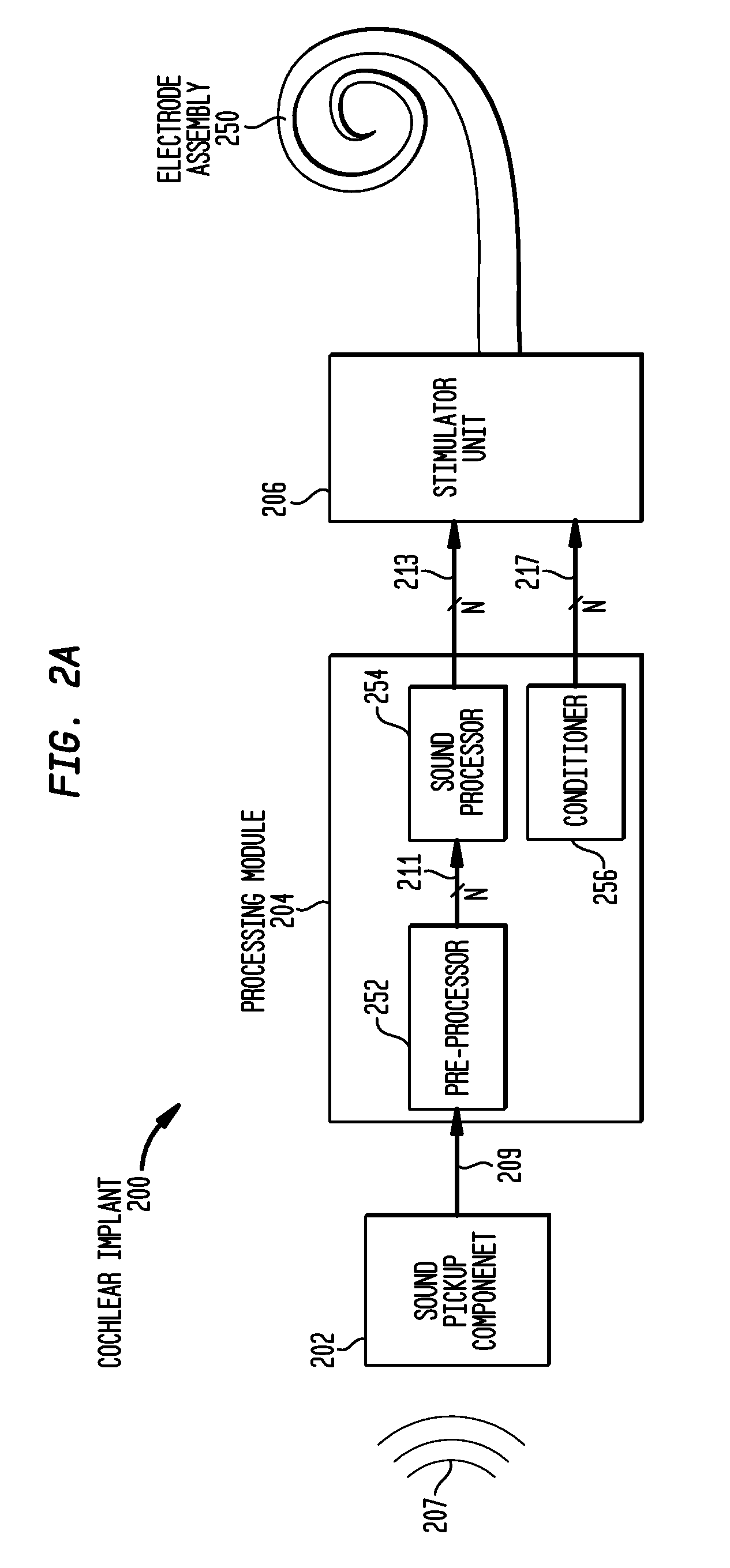Stochastic stimulation in a hearing prosthesis
a hearing prosthesis and stochastic stimulation technology, applied in the field of hearing prosthesis, can solve the problems of conductive hearing loss, impeded hearing, sensory hair cells in the ear,
- Summary
- Abstract
- Description
- Claims
- Application Information
AI Technical Summary
Problems solved by technology
Method used
Image
Examples
Embodiment Construction
[0028]Aspects of the present invention are generally directed to stochastic stimulation in a hearing prosthesis. Specifically, a stochastic sequence of stimulation signals is generated and delivered to the recipient. The sequence of signals comprises electrical, mechanical or acoustical pulses generated and delivered to the inner, middle, or outer ear of cochlea of the recipient. The pulses within the sequence have controlled randomness in the pulse timing. That is, the time intervals between immediately adjacent pulses (referred to as inter-pulse intervals herein) are selected stochastically within controlled limits.
[0029]Embodiments of the present invention may be implemented in various types of hearing prostheses such as a cochlear™ prosthesis (commonly referred to as a cochlear™ prosthetic device, cochlear™ implant, cochlear™ device, and the like; simply “cochlear implants” herein), middle ear transducers or acoustic hearing aids. For ease of illustration, the present invention ...
PUM
 Login to View More
Login to View More Abstract
Description
Claims
Application Information
 Login to View More
Login to View More - R&D
- Intellectual Property
- Life Sciences
- Materials
- Tech Scout
- Unparalleled Data Quality
- Higher Quality Content
- 60% Fewer Hallucinations
Browse by: Latest US Patents, China's latest patents, Technical Efficacy Thesaurus, Application Domain, Technology Topic, Popular Technical Reports.
© 2025 PatSnap. All rights reserved.Legal|Privacy policy|Modern Slavery Act Transparency Statement|Sitemap|About US| Contact US: help@patsnap.com



